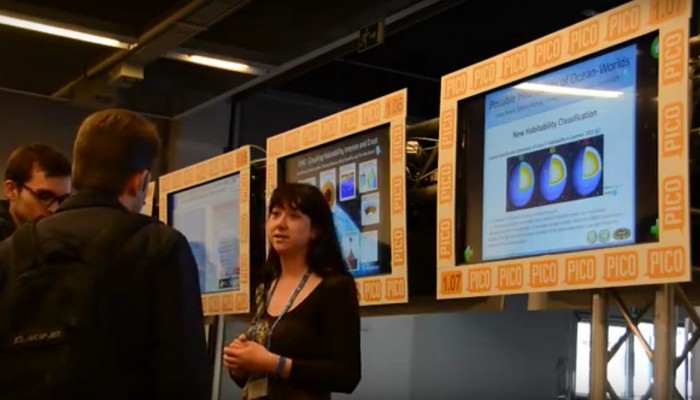
Some of the sessions scheduled for the upcoming EGU General Assembly are PICO only sessions. This means that, rather than being oral or poster format, they involve Presenting Interactive COntent (PICO). The aim of these presentations is to highlight the essence of a particular research area – just enough to get the audience excited about a topic without overloading them with information.
What’s great about this format is that it combines the best of oral and poster presentations. It allows researchers to stand up and be recognised for great research while giving an oral contribution as well as discussing their work in detail and networking with other participants.
PICO sessions start with a series of 2 minute long presentations – one from each author. They can be a Power Point, a movie, an animation, or simply a PDF showing your research on a display. After the 2 minute talks, the audience can explore each presentation on touch screens, where authors are also available to answer questions and discuss their research in more detail.
Presenting a PICO for the first time can be daunting, so we’ve prepared a guide which talks you through the format step-by-step. It’s packed with practical tips on the best layout for your PICO, how to capture the audience’s attention in just two minutes and how to get the most out of the discussion at the interactive screen.
And don’t forget, as of the 2016 General Assembly, PICO presentations are part of the Outstanding Student Poster and PICO (OSPP) Awards. To be considered for the OSPP award, you must be the first author and personally present the PICO at the conference:
- being a current undergraduate (e.g., BSc) or postgraduate (e.g., MSc, PhD) student;
- being a recent undergraduate or postgraduate student (conferral of degree after 1 January of the year preceding the conference) who are presenting their thesis work.
Entering couldn’t be easier! Make sure you nominate yourself when you submit your abstract on-line. You’ll receive a letter, known as ‘Letter of Schedule’, confirming your presentation has been accepted, which will also include a link by which to register for the award. Before the conference, make sure you include the OSPP label (which you can find here) to your PICO presentation header so that the judges of the OSPP award now to evaluate your presentation.
To learn more about PICO presentations see the General Assembly website or download the How to make a PICO guide. For a first-hand account of what it’s like to take part in a PICO session, take a look at this post by early career scientists in the Seismology Division too. Finally, you can also check out the short introductory video below:
EGU 2018 will take place from 08 to 13 April 2017 in Vienna, Austria. For more information on the General Assembly, see the EGU 2018 website and follow us on Twitter (#EGU18 is the official conference hashtag) and Facebook.



